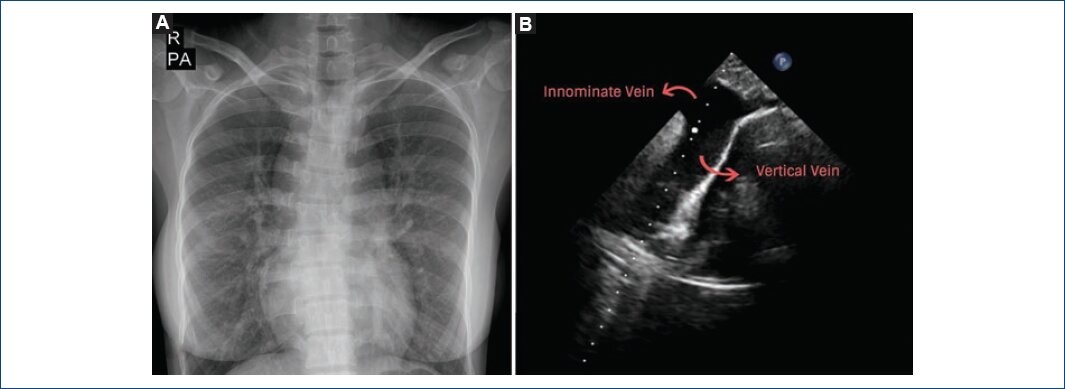A 27-year-old woman presented with dyspnea and fatigue. She was an immigrant, who had received little medical care. On examination, she was cyanotic with O2-saturation of 75% at room air and had clubbing. Chest-X-ray showed increased pulmonary vascular markings and widening of the superior mediastinum and a classic "snowman" or "cottage loaf" appearance, indicative of supra-cardiac total anomalous pulmonary venous return (TAPVR) (Fig. 1A). In transthoracic echocardiography, right-sided chambers enlargement and atrial septal defect were present. The patient had obligatory right to left shunt since none of the pulmonary veins drained to the left atrium, and accordingly mixed oxygenated and non-oxygenated blood passed from right atrium to left atrium through atrial septal defect without which survival would not be possible for the patient. Pulmonary pressure was estimated 45 mmHg by echocardiography. TAPVR is characterized by anomalous drainage of all four pulmonary veins into the right atrium. As such, survival is dependent on the right to left shunt through the interatrial septum. Survival to adulthood in unrepaired patients is extremely rare1. In supra-cardiac form, the confluence of pulmonary veins behind the heart drains to an ascending vertical vein (VV) which forms the right of the upper mediastinum. VV drains into the innominate vein (Fig. 1B) and eventually to the dilated right superior vena cava, which altogether make the head of the snowman. The lower part of snowman is made up of enlarged right-sided chambers. We recommended the right heart catheterization and corrective surgery for the patient. In such patients, surgery would be in the form of restoration of pulmonary vein drainage to left atrium and closure of the atrial septal defect. Unfortunately, the patient refused treatment and was lost to follow-up.

Figure 1 A: Chest X-ray showing snowman-shaped heart. B: Transthoracic echocardiogram from the suprasternal window showing vertical vein draining into the innominate vein. PA: posterioanterior projection; R: right side.
Supplementary data
Supplementary data are available at Revista Archivos de Cardiología de México online (http://www.archivoscardiologia.com/index.php#). These data are provided by the corresponding author and published online for the benefit of the reader. The contents of supplementary data are the sole responsibility of the authors.











 text new page (beta)
text new page (beta)


